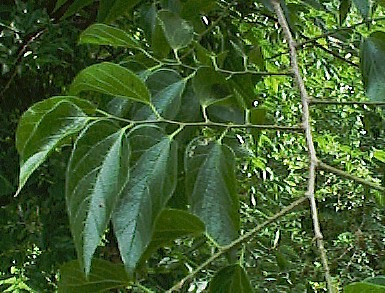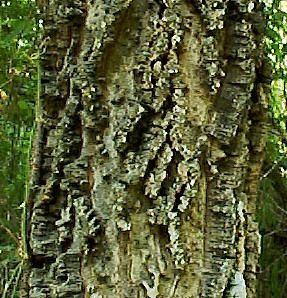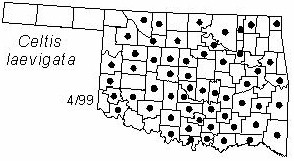

Tree to 18 m (60 ft) tall and 60 cm (2 ft) in diameter, with a wide-spreading and irregular crown. Bark light gray, thin, smooth, with more or less numerous corky warts. Twigs thin, brown, soon becoming glabrous. Buds light brown, slightly hairy, with 4 scales, no terminal bud. Leaves alternate, broadly lanceolate, 6-10 cm (2.4-4 in) long and 2-4 cm (0.8-1.6 in) wide, acuminate, often curved, margins usually entire or with a few teeth, thin, dark green and glabrous above, pale and usually glabrous below. [In southwestern Oklahoma, a variation sometimes called var. texana (Scheele) Sarg., has shorter ovate leaves.] Fruits drupes, on stalks at leaf bases, globular, about 6 mm (1/4 in) in diameter, orange to purple, ripening in fall, thin flesh dry and sweet.
Distribution: About the southeastern quarter of the U. S.
Habitat: Mostly in floodplain forests and mesic upland forests.
NWI status: FAC
Comment:This and other hackberries are widely used as shade trees in Oklahoma and Texas. In central and west-central Oklahoma, where several species and varieties of Celtis occur together, numerous individual trees have characteristics of two or more of the taxa. Identification of a particular tree in this area is often difficult or impossible. The fruits are eaten by squirrels and many species of birds. Celtis is a name given by Pliny to some plant with sweet berries; laevigata means smooth, and probably refers to the leaves.
Distribution in Oklahoma: 
BACK
NEXT
RETURN TO INDEX
Last update: 9/9/99
 Go to Oklahoma Biological Survey Home Page
Go to Oklahoma Biological Survey Home Page
 Disclaimer
Disclaimer